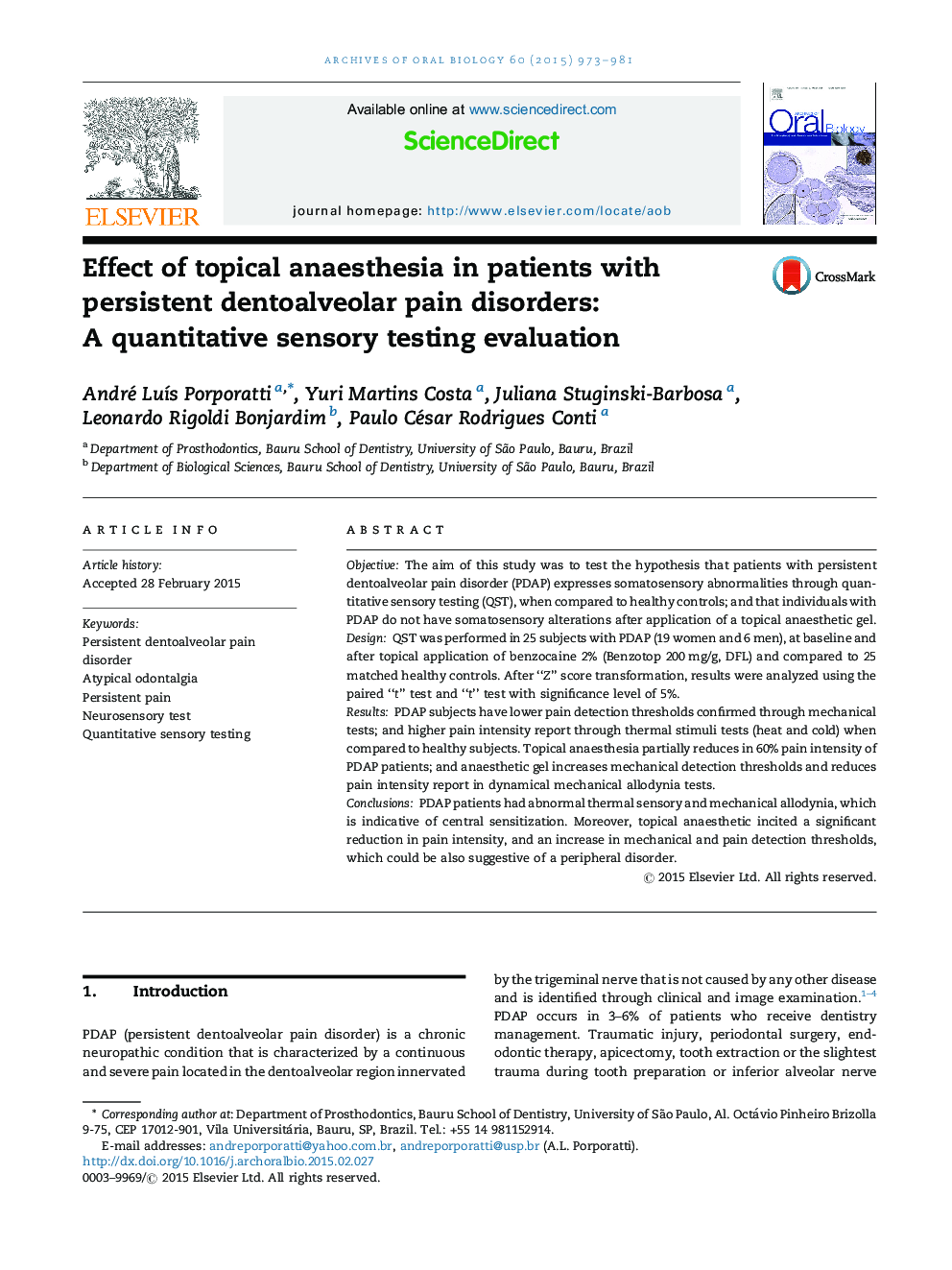| Article ID | Journal | Published Year | Pages | File Type |
|---|---|---|---|---|
| 3120817 | Archives of Oral Biology | 2015 | 9 Pages |
•PDAP subjects have somatosensory abnormalities.•PDAP subjects have lower pain detection thresholds than healthy subjects.•PDAP subjects have higher pain intensity through thermal stimuli than healthy subjects.•Topical anaesthesia partially reduces in 60% pain intensity of PDAP subjects.•Topical anaesthesia increases pain detection thresholds in QST mechanical tests of PDAP subjects.
ObjectiveThe aim of this study was to test the hypothesis that patients with persistent dentoalveolar pain disorder (PDAP) expresses somatosensory abnormalities through quantitative sensory testing (QST), when compared to healthy controls; and that individuals with PDAP do not have somatosensory alterations after application of a topical anaesthetic gel.DesignQST was performed in 25 subjects with PDAP (19 women and 6 men), at baseline and after topical application of benzocaine 2% (Benzotop 200 mg/g, DFL) and compared to 25 matched healthy controls. After “Z” score transformation, results were analyzed using the paired “t” test and “t” test with significance level of 5%.ResultsPDAP subjects have lower pain detection thresholds confirmed through mechanical tests; and higher pain intensity report through thermal stimuli tests (heat and cold) when compared to healthy subjects. Topical anaesthesia partially reduces in 60% pain intensity of PDAP patients; and anaesthetic gel increases mechanical detection thresholds and reduces pain intensity report in dynamical mechanical allodynia tests.ConclusionsPDAP patients had abnormal thermal sensory and mechanical allodynia, which is indicative of central sensitization. Moreover, topical anaesthetic incited a significant reduction in pain intensity, and an increase in mechanical and pain detection thresholds, which could be also suggestive of a peripheral disorder.
